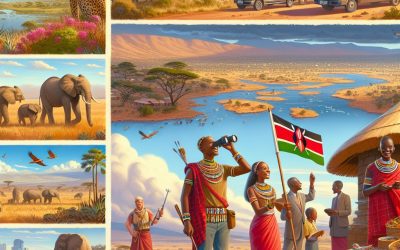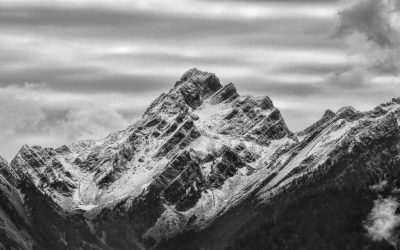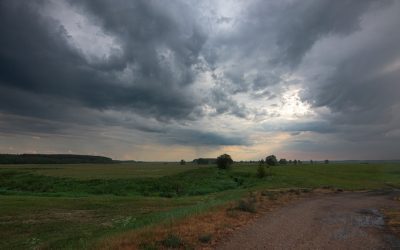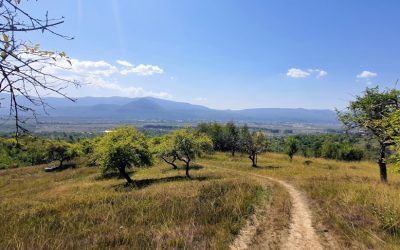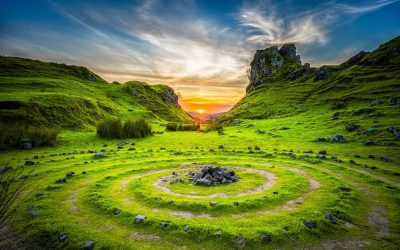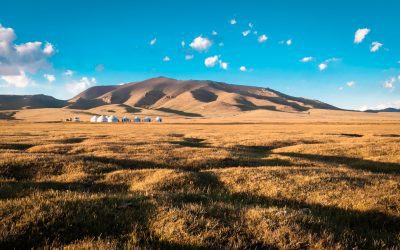World Geography
Geography is the study of the Earth’s landscapes, environments, and the relationships between people and their surroundings. It encompasses both the physical aspects of the Earth, such as its landforms, bodies of water, and climate, as well as the human aspects, including population distribution, cultures, and economies. World geography is a broad field that seeks to understand the complexities of our planet and how humans interact with it. By studying world geography, we can gain a deeper appreciation for the diversity of our planet and the interconnectedness of its various regions.
Geography is a multidisciplinary field that draws on elements of physical science, social science, and humanities. It involves the use of maps, spatial analysis, and geographic information systems (GIS) to understand the Earth’s surface and the processes that shape it. World geography also encompasses the study of human geography, which examines the ways in which people and their activities are distributed across the Earth. By understanding world geography, we can better appreciate the environmental, cultural, and economic challenges facing different regions of the world. This knowledge is crucial for addressing global issues such as climate change, resource management, and international development.
The Five Oceans and Seven Continents
The Earth’s surface is divided into five major oceans: the Pacific, Atlantic, Indian, Southern (or Antarctic), and Arctic Oceans. These vast bodies of water play a crucial role in regulating the Earth’s climate and supporting diverse marine ecosystems. The oceans also serve as important transportation routes and a source of food and other natural resources for human societies around the world.
In addition to the oceans, the Earth’s landmasses are divided into seven continents: Africa, Antarctica, Asia, Europe, North America, Australia (or Oceania), and South America. Each continent has its own unique physical and cultural characteristics, shaped by millions of years of geological processes and human history. From the deserts of Africa to the rainforests of South America, the continents offer a rich tapestry of landscapes and environments for exploration and study.
Major Mountain Ranges and Deserts
The Earth’s surface is also marked by major mountain ranges and deserts that have shaped the planet’s physical and cultural landscapes. The Himalayas, for example, are the highest mountain range in the world and are home to diverse ecosystems and cultures in countries such as India, Nepal, and Bhutan. The Andes in South America, the Rockies in North America, and the Alps in Europe are other prominent mountain ranges that have influenced human settlement patterns and economic activities.
Deserts cover about one-third of the Earth’s land surface and are characterized by low precipitation and extreme temperatures. The Sahara Desert in Africa is the largest hot desert in the world, while the Gobi Desert in Asia is one of the largest cold deserts. Deserts are not only home to unique flora and fauna but have also been important trade routes and cultural crossroads throughout history.
Climate Zones and Biomes
The Earth’s climate is influenced by a variety of factors, including latitude, altitude, ocean currents, and prevailing winds. As a result, the planet is divided into different climate zones, each with its own characteristic weather patterns and ecosystems. The equator, for example, experiences a tropical climate with high temperatures and heavy rainfall, while the polar regions have a cold and dry climate.
These climate zones give rise to different biomes, or large ecological areas characterized by distinct plant and animal communities. The tropical rainforest biome, found near the equator, is home to a diverse array of species and is vital for regulating the Earth’s climate. The grasslands biome, found in regions such as the African savannah and North American prairies, supports grazing animals and has been important for human agriculture throughout history.
Human Geography and Population Distribution
Human geography examines the ways in which people and their activities are distributed across the Earth’s surface. It encompasses topics such as population growth, migration patterns, urbanization, and cultural diversity. Understanding human geography is crucial for addressing global challenges such as poverty, inequality, and environmental degradation.
Population distribution is uneven across the world, with some regions experiencing rapid population growth while others are declining. The majority of the world’s population lives in Asia, particularly in countries such as China and India. Urban areas are also growing rapidly, with more than half of the world’s population now living in cities. This trend has significant implications for infrastructure development, resource management, and social inequality.
Historical and Cultural Geography
Historical geography examines how human activities have shaped the Earth’s landscapes over time. It explores topics such as colonialism, trade routes, and the rise and fall of empires. Cultural geography focuses on how human cultures have developed in different regions of the world and how they interact with their environments.
The Silk Road, for example, was an ancient trade route that connected China with Europe and facilitated the exchange of goods, ideas, and technologies across Eurasia. This historical trade route had a profound impact on the development of cultures and economies along its path. Similarly, cultural geographers study how different societies have adapted to their environments through practices such as agriculture, architecture, and religious beliefs.
The Importance of Geographic Knowledge
Geographic knowledge is crucial for addressing global challenges such as climate change, resource management, and international development. By understanding world geography, we can better appreciate the environmental, cultural, and economic challenges facing different regions of the world. This knowledge is crucial for addressing global issues such as climate change, resource management, and international development.
Geographic knowledge also helps us to understand our interconnectedness with other regions of the world. By studying world geography, we can gain a deeper appreciation for the diversity of our planet and the interconnectedness of its various regions. This understanding can foster a sense of global citizenship and empathy for people from different cultures and backgrounds.
In conclusion, world geography is a complex and multifaceted field that encompasses both physical and human aspects of the Earth’s landscapes. By studying world geography, we can gain a deeper appreciation for the diversity of our planet and the interconnectedness of its various regions. This knowledge is crucial for addressing global challenges such as climate change, resource management, and international development. It also helps us to understand our interconnectedness with other regions of the world and fosters a sense of global citizenship.
FAQs
What is world geography?
World geography is the study of the Earth’s landscapes, environments, and the relationships between people and their environments. It encompasses the physical features of the Earth, as well as the human activity that takes place on it.
Why is world geography important?
World geography is important because it helps us understand the world around us. It provides insights into the physical and human processes that shape our planet, and helps us make informed decisions about how to interact with our environment.
What are the main branches of world geography?
The main branches of world geography include physical geography, which focuses on the Earth’s natural features and processes, and human geography, which examines the relationships between people and their environments.
How does world geography impact our daily lives?
World geography impacts our daily lives in numerous ways, from influencing the weather and climate we experience, to shaping the availability of natural resources and influencing the distribution of populations and cultures around the world.
What are some key concepts in world geography?
Key concepts in world geography include location, place, human-environment interaction, movement, and region. These concepts help geographers understand and interpret the world around them.
Natural Resources of Kenya: Where Natural Resources are located In Kenya
Kenya boasts a diverse array of natural resources that are integral to its economy and the well-being of its citizens. The country’s assets include fertile agricultural land, mineral deposits, plentiful water resources, potential for renewable energy, and a wealth of wildlife and forests. These natural resources are not only a source of national pride but also present significant economic opportunities. However, the sustainable management of these assets is paramount to ensure their long-term availability. This article shall examine the varied natural resources found in Kenya, their importance to the nation, and the challenges and prospects for their sustainable utilisation. Summary Kenya is rich in natural resources, including land, minerals, water, renewable energy potential, and biodiversity. Agriculture and livestock play a significant role in Kenya’s economy, with a diverse range of crops and livestock being produced. Kenya has a wealth of mineral resources, including soda ash, fluorspar, and titanium, which are extracted through mining activities. The country is blessed with abundant water resources, including rivers, lakes, and aquifers, which are crucial for agriculture, industry, and domestic use. Kenya has great potential for renewable energy, particularly geothermal, solar, and wind power, which can help meet the country’s energy needs in a sustainable way. The country’s rich biodiversity, including iconic wildlife and diverse forests, presents both conservation challenges and opportunities for sustainable management. Kenya faces challenges in managing its natural resources sustainably, but there are also opportunities for economic development and environmental conservation through responsible resource management. The Riches of Kenya’s Land: Agriculture and Livestock Agriculture and Livestock: The Backbone of Kenya’s Economy The agricultural and livestock sectors are vital to Kenya’s...
Cultural or Historical Sites of Kenya: Important Cultural Landmarks or Historical Sites in Kenya
Kenya boasts a rich cultural and historical heritage, encompassing a diverse array of sites that provide insight into the nation’s past. From ancient ruins to colonial fortifications, Kenya‘s cultural and historical landmarks serve as a testament to the country’s multifaceted history. These sites not only offer a window into Kenya’s past but also provide visitors with the opportunity to learn about the nation’s traditions, customs and way of life. Notable examples include the ancient ruins of Gedi and the colonial-era Fort Jesus in Mombasa, both of which are essential visits for those interested in Kenya’s rich heritage. Kenya’s cultural and historical sites play a crucial role in preserving the nation’s past and promoting tourism and economic development. Many of these locations are UNESCO World Heritage Sites, attracting visitors from across the globe. By maintaining and promoting these sites, Kenya showcases its rich cultural heritage and draws tourists keen to explore the country’s history. Furthermore, these sites serve an important educational function for the local population, fostering a sense of pride and identity among Kenyans. In essence, Kenya’s cultural and historical sites form an integral part of the nation’s identity and are vital in promoting tourism and preserving the country’s rich heritage. Summary Kenya is home to a rich tapestry of cultural and historical sites that offer a glimpse into the country’s diverse heritage. The Great Rift Valley is a geological wonder that stretches across Kenya, offering breathtaking landscapes and unique wildlife viewing opportunities. Fort Jesus in Mombasa is a UNESCO World Heritage Site that bears witness to the region’s tumultuous history and the influence of Portuguese colonialism. Lamu Old...
Population Density of Kenya
Population density refers to the number of people living per square kilometre in a given area. In Kenya, population density varies significantly across different regions, with some areas being densely populated whilst others are sparsely populated. The country’s population density is influenced by various factors such as geographical features, economic activities, and government policies. Understanding population density in Kenya is crucial for planning and development, as it directly impacts infrastructure, resources, and the overall well-being of the population. Kenya is a country situated in East Africa, with a population exceeding 50 million people. The population density in Kenya is unevenly distributed, with the majority of the population concentrated in urban areas such as Nairobi, Mombasa, and Kisumu. The rural areas also have varying population densities, with some regions being densely populated due to agricultural activities, whilst others are sparsely populated due to harsh climatic conditions or limited economic opportunities. The distribution of population density in Kenya has implications for resource allocation, service delivery, and environmental sustainability. It is essential to understand the factors influencing population density in Kenya to effectively address the challenges and opportunities associated with high population density. Summary Kenya has a high population density, with an average of 94 people per square kilometre, making it one of the most densely populated countries in Africa. Factors influencing population density in Kenya include urbanization, economic opportunities, and natural resources, leading to uneven distribution across the country. Regional variations in population density in Kenya are evident, with higher densities in urban areas like Nairobi and Mombasa, and lower densities in rural regions. High population density in Kenya puts pressure...
Kenya
Kenya (Jamhuri ya Kenya (Swahili); Republic of Kenya (English)) Capital: Nairobi Population (Estimated July 2012): 43,013,341 Area: 582,646 km2 or 224,961 mi2 Currency: Kenyan Shilling (KSh) Official Language: Swahili; English Political Information: Semi-Presidential Republic Official Religion: No Official Religion(approximately 45% of the population is Protestant and 33% Roman Catholic, 10% are Muslim and 12% have other religious beliefs) Highest Mountain: Mount Kenya at 5,199m or 17,057 ft GDP Official Exchange Rate (OER is more precise at gauging a country’s economic power) (Estimated 2011): $36.1 billion (US$) or (GBP) GDP (OER) Per Capita (per member of the population estimated 2011): (US$) or (GBP) GDP Purchasing Power Parity (PPP is good for gauging living conditions and use of resources but is not as accurate as OER. This data has been calculated based on the sum value of all goods and services produced in the country valued at prices prevailing in the United States) (Estimated 2011): $70.85 billion (US$) or (GBP) GDP (PPP) Per Capita (per member of the population estimated 2011): $1,700 (US$) or (GBP) Time Zone (GMT/UTC): +3:00 WildlifeBig Five Mammals African Elephant, African Lion, African Leopard, African Buffalo, Rhinoceros (both Black and White). Other Large Mammals Giraffe (Masai and Reticulated), Hippopotamus, Cheetah, Zebra (Common and Grevy’s), Wildebeest. Primates Olive Baboon, Vervet Monkey, Colobus Monkey (Black and White), Patas Monkey, Sykes’ Monkey. Antelopes and Other Herbivores Impala, Grant’s Gazelle, Thomson’s Gazelle, Waterbuck, Dik-dik, Eland, Hartebeest, Kudu. Carnivores Hyena (Spotted and Striped), African Wild Dog, Serval, Caracal, Genet, Jackal (Black-backed, Side-striped, and Golden). Birds of Prey Martial Eagle, Crowned Eagle, Secretary Bird, Vultures (White-backed, Rüppell’s, Hooded, and Lappet-faced). Other Notable Birds Flamingo (Greater and Lesser), Ostrich, Marabou Stork, Hornbills, Kingfishers, African Fish...
Terrain and Topography of Kazakhstan: mountains, valleys, and plains.
Kazakhstan, the ninth largest country in the world, is situated in Central Asia and is renowned for its diverse terrain and topography. The nation shares borders with Russia to the north, China to the east, Kyrgyzstan, Uzbekistan, and Turkmenistan to the south, and the Caspian Sea to the west. Kazakhstan’s landscape is remarkably varied, comprising mountains, valleys, and expansive plains. The country’s topography is the result of millions of years of geological processes, including tectonic movements, erosion, and glaciation, which have shaped its distinctive features. The terrain of Kazakhstan offers a wide range of geographical elements, from the Tian Shan mountains in the southeast to the vast steppes that cover much of the country. The Kazakh Uplands, a region of low mountains and hilly plains, dominate the central and eastern parts of the country. In the west, the Caspian Depression, which includes areas below sea level, presents a unique topographical feature. Kazakhstan’s diverse landscapes support a rich variety of flora and fauna, contributing to the country’s biodiversity. The terrain provides opportunities for various outdoor activities, including hiking, mountaineering, and wildlife observation. The country’s natural features also play a significant role in its economy, influencing agriculture, mineral extraction, and energy production. The topography of Kazakhstan has had a profound impact on the nation’s history, culture, and development. It has shaped traditional nomadic lifestyles, influenced trade routes, and continues to affect modern infrastructure and urban planning. As Kazakhstan continues to develop, the preservation and sustainable use of its varied terrain remain important considerations for environmental and economic policies. Summary Kazakhstan’s terrain and topography are incredibly diverse, ranging from majestic mountains to...
Climate Zones of Kazakhstan: Different climate regions Of Kazakhstan
Kazakhstan, the ninth largest country in the world, is situated in Central Asia and is characterised by diverse climate zones. The nation’s expansive territory extends from the Caspian Sea in the west to the Altai Mountains in the east, and from the Siberian taiga in the north to the deserts of Central Asia in the south. This geographical diversity results in a wide range of climate zones, each with its own distinct characteristics and challenges. Understanding Kazakhstan’s climate zones is essential for both residents and visitors, as it influences various aspects of life, including agriculture, industry, daily activities and travel. Kazakhstan’s climate can be broadly categorised into six main zones: the continental climate of northern Kazakhstan, the arid climate of central Kazakhstan, the mountainous climate of eastern Kazakhstan, the semi-arid climate of southern Kazakhstan, and the steppe climate of western Kazakhstan. Each of these zones exhibits unique weather patterns, temperature ranges and precipitation levels, making them suitable for different types of flora, fauna and human activities. As global climate change continues, Kazakhstan’s climate zones are also experiencing shifts, which may have significant implications for the country’s environment, economy and society. This article will examine each of Kazakhstan’s climate zones in detail, exploring their unique characteristics and the potential impact of climate change on these regions. Summary Kazakhstan has diverse climate zones, including continental, arid, mountainous, semi-arid, and steppe climates. Northern Kazakhstan experiences a continental climate with cold winters and hot summers. Central Kazakhstan has an arid climate with low precipitation and extreme temperature variations. Eastern Kazakhstan is characterised by mountainous climate with cold winters and mild summers. Southern Kazakhstan...
Political Boundaries of Kazakhstan: Provinces, Districts, or Historical Boundaries.
Kazakhstan, the largest landlocked country in the world, is situated in Central Asia. It shares borders with Russia to the north, China to the east, Kyrgyzstan, Uzbekistan, and Turkmenistan to the south, and the Caspian Sea to the west. The country is administratively divided into 14 provinces (oblystar) and 3 cities (qalalar) with provincial status. The political boundaries in Kazakhstan have evolved over time, influenced by historical, cultural, and administrative factors. These boundaries play a crucial role in governance, administration, and the distribution of resources within the country. Understanding the political boundaries of Kazakhstan is essential for comprehending the country’s complex administrative structure and its impact on governance and development. Kazakhstan’s political boundaries have been shaped by a variety of factors, including historical conquests, cultural diversity, and administrative needs. The country’s vast territory has historically been inhabited by various ethnic groups, each with its own distinct cultural identity. As a result, the political boundaries in Kazakhstan have been influenced by the need to accommodate these diverse cultural regions whilst maintaining a unified administrative structure. The country’s transition from a Soviet republic to an independent nation in 1991 also had a significant impact on its political boundaries, as it led to the establishment of new administrative divisions and the reorganisation of existing ones. This complex history has contributed to the diverse and intricate political boundaries that exist in Kazakhstan today. Summary Kazakhstan is a vast country with diverse political boundaries, including provinces and administrative districts. Historical boundaries and cultural regions have played a significant role in shaping Kazakhstan’s political landscape. The impact of political boundaries on governance and administration has...
History of Kazakhstan
Kazakhstan possesses a rich and diverse history spanning thousands of years. The region was inhabited by nomadic tribes as early as the 1st millennium BC, with evidence of early human settlement found in the form of ancient petroglyphs and archaeological sites. The Scythians, a nomadic people renowned for their horsemanship and martial prowess, were among the earliest known inhabitants of the region. They left behind a legacy of intricate gold jewellery and other artefacts that have been unearthed by archaeologists. The Silk Road, an ancient network of trade routes connecting the East and West, traversed Kazakhstan, fostering cultural exchange and economic prosperity. The region became a melting pot of diverse cultures and ethnicities, with influences from China, Persia, and the Middle East shaping Kazakhstan’s development. The ancient city of Otrar, situated in present-day southern Kazakhstan, served as a major trading hub along the Silk Road and a centre of commerce and cultural exchange. The city was renowned for its bustling markets and its role in facilitating trade between East and West. Summary Kazakhstan has a rich early history dating back to the Bronze Age, with evidence of ancient settlements and trade routes. The Mongol Empire and the Golden Horde had a significant impact on Kazakhstan, shaping its culture and society. The Kazakh Khanate emerged as a powerful state in the 15th century, eventually coming under the control of the Russian Empire in the 18th century. Soviet rule brought significant changes to Kazakhstan, including industrialization and the establishment of the Kazakh SSR. Kazakhstan gained independence from the Soviet Union in 1991 and has since focused on modernization and economic development....
Population Density of Kazakhstan
Population density refers to the number of people living in a specific area, typically measured in square kilometres or square miles. It is a crucial demographic indicator that offers insights into the distribution of people within a country or region. In Kazakhstan, population density varies significantly across the country, with some areas being densely populated whilst others are sparsely populated. Understanding population density is essential for policymakers, urban planners and researchers, as it aids in making informed decisions about resource allocation, infrastructure development and social services provision. Kazakhstan, the ninth largest country in the world by land area, has a relatively low population density compared to many other countries. The country’s population density stands at approximately 6 people per square kilometre, with the majority of the population concentrated in urban areas. However, there are significant regional variations in population density, with the southern regions being more densely populated compared to the northern and eastern parts of the country. This variation in population density is influenced by a range of factors, including geographical features, historical settlement patterns and economic opportunities. Understanding these factors is crucial for gaining insights into the dynamics of population distribution in Kazakhstan. Summary Population density refers to the number of people living in a specific area, usually measured in square kilometres. Factors affecting population density in Kazakhstan include natural resources, climate, economic opportunities, and government policies. Urban areas in Kazakhstan have higher population density compared to rural areas, where the population is more spread out. High population density can put a strain on infrastructure such as transportation, housing, and healthcare facilities. Challenges of high population density...
Natural Resources of Kazakhstan: Where Natural Resources are located In Kazakhstan
Kazakhstan, the ninth largest country in the world, is abundant in natural resources. The nation’s diverse landscape encompasses vast steppes, deserts, mountains and forests, which harbour a wide variety of natural assets. Kazakhstan’s natural resources play a crucial role in the country’s economy and have the potential to contribute significantly to its future development. From oil and gas reserves to mineral resources, agricultural resources, water resources and renewable energy potential, Kazakhstan’s natural wealth is a key factor in shaping its economic and environmental future. Kazakhstan’s natural resources have been a driving force behind the country’s economic growth and development. The exploitation of these resources has led to significant foreign investment and has helped to establish Kazakhstan as a major player in the global energy market. However, the sustainable use and conservation of these resources are essential to ensure their availability for future generations. This article will explore the various natural resources found in Kazakhstan, their significance to the country’s economy and the importance of conservation and sustainable use for the future. Summary Kazakhstan is rich in natural resources, including oil, gas, minerals, agriculture, water, and renewable energy potential. The country has significant oil and gas reserves, making it a major player in the global energy market. Kazakhstan also boasts abundant mineral resources, including coal, iron ore, copper, and gold. The country’s agricultural resources are diverse, with vast tracts of arable land and a variety of crops and livestock. Kazakhstan has ample water resources, with numerous rivers, lakes, and reservoirs providing water for irrigation and other uses. Oil and Gas Reserves in Kazakhstan Oil and Gas Reserves These fields are...
Cultural or Historical Sites of Kazakhstan: Important Cultural Landmarks or Historical Sites In Kazakhstan
Kazakhstan, the ninth largest country in the world, boasts a rich cultural and historical heritage. The nation is home to a diverse array of cultural and historical sites that reflect its long and varied past. From ancient mausoleums to stunning natural landscapes, Kazakhstan offers a wealth of attractions for visitors to explore. The country’s cultural and historical sites stand as a testament to its rich history and the diverse influences that have shaped its identity over the centuries. Kazakhstan’s cultural and historical sites reflect the country’s unique blend of Eastern and Western influences. From the ancient Silk Road to the Soviet era, Kazakhstan has been moulded by a variety of cultural and historical forces. The country’s cultural and historical sites offer a glimpse into its past, from the ancient traditions of the Kazakh people to the legacy of the Soviet Union. Visitors to Kazakhstan can explore a wide range of cultural and historical sites, each offering a unique insight into the country’s rich heritage. Summary Kazakhstan is home to a rich array of cultural and historical sites that showcase its diverse heritage. The Mausoleum of Khoja Ahmed Yasawi is a UNESCO World Heritage site and an important pilgrimage destination for Muslims. The Aisha-Bibi Mausoleum is a stunning example of ancient architecture and a symbol of love and devotion. The Petroglyphs of Tamgaly offer a glimpse into the ancient rock art and spiritual practices of the region. The Kazakh traditional dwellings, known as yurts, are a fascinating insight into the nomadic lifestyle of the Kazakh people. The Mausoleum of Khoja Ahmed Yasawi Architectural Significance The mausoleum is a stunning example...
Political Boundaries of Jordan: Provinces, Districts, or Historical Boundaries.
Jordan, officially known as the Hashemite Kingdom of Jordan, is a country located in the Middle East, bordered by Saudi Arabia to the south and east, Iraq to the north-east, Syria to the north, and Israel and Palestine to the west. The country has a rich history and is known for its diverse cultural heritage, ancient ruins, and stunning landscapes. Jordan’s political boundaries have evolved over time, influenced by historical, geographical, and geopolitical factors. The country’s borders have been shaped by various treaties, agreements, and conflicts, which have had a significant impact on its governance and administration. The political boundaries of Jordan play a crucial role in defining the country’s territorial integrity and sovereignty. They determine the extent of Jordan’s jurisdiction and authority over its territory, as well as its relationships with neighbouring countries. The delineation of these boundaries has been a complex and contentious issue, shaped by historical events, colonial legacies, and regional power dynamics. Understanding Jordan’s political boundaries is essential for comprehending the country’s governance structure, administrative divisions, and historical context. Summary Jordan’s political boundaries have evolved over time, shaping the country’s governance and administration. The administrative divisions of Jordan are divided into 12 provinces, each with its own governor appointed by the central government. Local governance in Jordan is further divided into districts, each with its own council responsible for local administration and development. The historical boundaries of Jordan have been influenced by ancient and modern geopolitical factors, impacting the country’s territorial integrity and sovereignty. The political boundaries of Jordan have significant implications for the country’s governance, including challenges and controversies surrounding border disputes and refugee...



